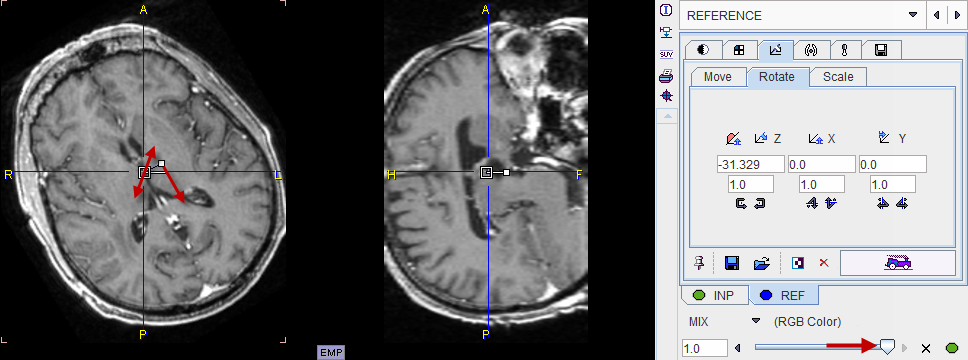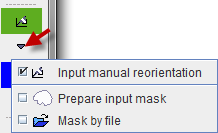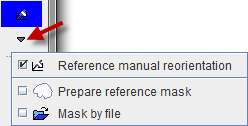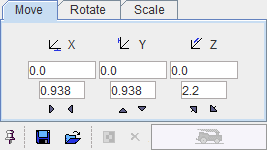Initial Reorientation
Before the actual registration is addressed, the images should be brought into a consistent orientation. If this is not the case after loading, the images may be reoriented. There are shortcut buttons in the lateral taskbar to achieve this conveniently.
|
Initial rearrangement of the INP images by mirroring and rotations with the panel Reorient the image to Standard orientation HFS |
|
Similar for the REF images.. |
|
Initial reorientation of the INP images by arbitrary translations and rotations with the reslicing panel.
|
|
Similar for the REF images by arbitrary translations and rotations with the reslicing panel. |
In the example below, the reference needs to be straightened. Activate ![]() , shift the fusion balance fully to REF, and then rotate the axial image.
, shift the fusion balance fully to REF, and then rotate the axial image.

Transformation Initialization
The next step is to ensure that the initialization is appropriate. This means that the images are either already aligned on the REFERENCE sub-page, or that they are brought into a reasonable overlap as described above.
Layout Adjustments
Initially the images will appear in orthogonal layout (Ctrl+D) which allows working easily in all 3 dimensions. For fine adjustments it may be preferable to switch to the axial (Ctrl+Z), coronal (Ctrl+Y) or sagittal (Ctrl+X) single-plane layout.
Restriction of Matching Volume
In some cases the automatic matching procedure needs to be restricted to a sub-volume of the data. This can be achieved in different ways.
As described above, the In box option allows defining a box in the reference image, top which the registration algorithm will be confined. An alternative is to define a free-form masking volume on the input or reference image using the selections from the lateral taskbar illustrated below.


Prepare input mask opens the segmentation tool described in the PMOD Base Functionality Guide for generating a mask file. Mask by file allows selecting an existing mask file
![]()
which can be inspected with the ![]() button. Note that each input file has its own mask definition
button. Note that each input file has its own mask definition
Registering Dynamic Images to a Reference
In the case of a dynamic INP series it is recommended to proceed as follows:
1.Check whether there is motion in the data. If there is, a motion correction should first be applied.
2.Calculate an average image from some dynamic frames. Typically, early PET frames will result in a perfusion-related image which provides a good pattern for registration to an MR image.
3.Match the average image to the reference.
4.Apply the resulting transformation to the dynamic series, as described above.

